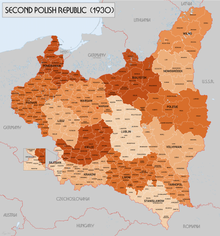User:WoodDogLibra/sandbox

Stanislaw (Stan) Kulik
[edit]Summary
[edit]Stanislaw Kulik was a member of the Polish 1st Independent Parachute Brigade which took part in the Battle of Arnhem in Operation Market Garden in September 1944[1].
Born near Ternopil in Eastern Poland in 1924, Stanislaw Kulik was deported to the Siberian gulag in the Soviet Union in February 1940, aged 15. Following Operation Barbarossa, the invasion of the Soviet Union by Nazi Germany starting in June 1941, he was permitted by the Soviet authorities to leave the gulag. Seeking the Polish Anders' Army, he travelled on his own through Russia, Kazakhstan and Uzbekistan, before finally finding the Polish army[2]. He was taken to Iran, and then on to Iraq, where he worked in a camp which processed Polish refugees. Stanislaw Kulik was then taken by boat to the UK, via Bombay in India.
In Scotland, Stanislaw Kulik trained as a paratrooper with the Polish 1st Independent Parachute Brigade. At the Battle of Arnhem, he was caught behind enemy lines and had to be sheltered by the Dutch underground, before eventually being rescued as part of Operation Pegasus[3].
Early Life
[edit]Stanislaw Kulik was born in a small town called Obrentchuvka, which was near Ternopil (Polish: Tarnopol). At the time, this was in the eastern part of Poland, although the borders of Poland have changed over time, and this land is now in Western Ukraine. His parents had moved from Krakow in order to buy a small farm, which Stanislaw helped to work on[4].

In September 1939, Nazi Germany invaded the west of Poland and, soon after, the Soviet Union invaded the east of Poland, where Stanislaw lived[5]. The Soviet invasion led to the repression of Polish influence, as well as arrests and executions of Polish figures of authority[6]. In February 1940, the Soviets began to deport vast numbers of Poles from eastern Poland to Siberia and other parts of the Soviet Union, to carry out manual labour[7]. Some estimates put the number as high as 1.5 million[8]. Stanislaw, then aged 15, was deported with his family to a Siberian gulag, located near a town called Murashi (Мураши in Cyrillic) located around 1000km north-east of Moscow.[1]
Soviet Gulag
[edit]Middle East
[edit]UK
[edit]Arnhem
[edit]Described in[9]
After World War Two
[edit]Awards
[edit]In the Media
[edit]In the Courier newspaper
In the Sunday Post newspaper[2]
Tarnowski - Walking with Shadows
Journey Without a Ticket
Thistle and Eagle? White Eagle?
- The First Independent Polish Parachute Brigade https://swoopingeagle.com/
- Museum exhibit honours Scotland's Polish parachute brigade https://www.bbc.com/news/uk-scotland-edinburgh-east-fife-57636725
References
[edit]- ^ a b c Kinloch, Nicholas (2023). From the Soviet Gulag to Arnhem: A Polish Paratrooper's Epic Wartime Journey. Pen and Sword. ISBN 978-1399045919.
- ^ a b "From Soviet Gulag to Scotland: Charting a Teenage Soldier's Journey". The Sunday Post. 2023.
- ^ Ryan, Cornelius (1974). A Bridge too far. London: H. Hamilton. ISBN 978-0-241-89073-8.
- ^ a b "From Soviet gulag to Fife: The teenage paratrooper forced to kill and eat a dog to survive". The Courier Evening Telegraph. 2023.
- ^ Kitchen, Martin (1990). A world in flames: a short history of the Second World War in Europe and Asia, 1939 - 1945. London: Longman. ISBN 978-0-582-03408-2.
- ^ Piotrowski, Tadeusz (1998). Poland's holocaust: ethnic strife, collaboration with occupying forces and genocide in the Second Republic, 1918-1947. Jefferson, N.C: McFarland. ISBN 978-0-7864-0371-4.
- ^ Rummel, Rudolph J. (1990). Lethal politics: Soviet genocide and mass murder since 1917. New Brunswick (N.J.) Oxford: Transaction. ISBN 978-0-88738-333-5.
- ^ Kushner, Tony; Knox, Katharine (1999). Refugees in an age of genocide: global, national and local perspectives during the Twentieth century. London Portland (Or.): F. Cass. ISBN 978-0-7146-4783-8.
- ^ Beevor, Antony (2018). Arnhem: the battle for the bridges, 1944. London: Viking, an imprint of Penguin Books. ISBN 978-0-670-91866-9.
- ^ "Naturalization" (PDF). Edinburgh Gazette: 615. 1950.
- ^ Cherrett, Martin. "From the Soviet Gulag to Arnhem". www.ww2today.com. Retrieved 2023-11-01.

